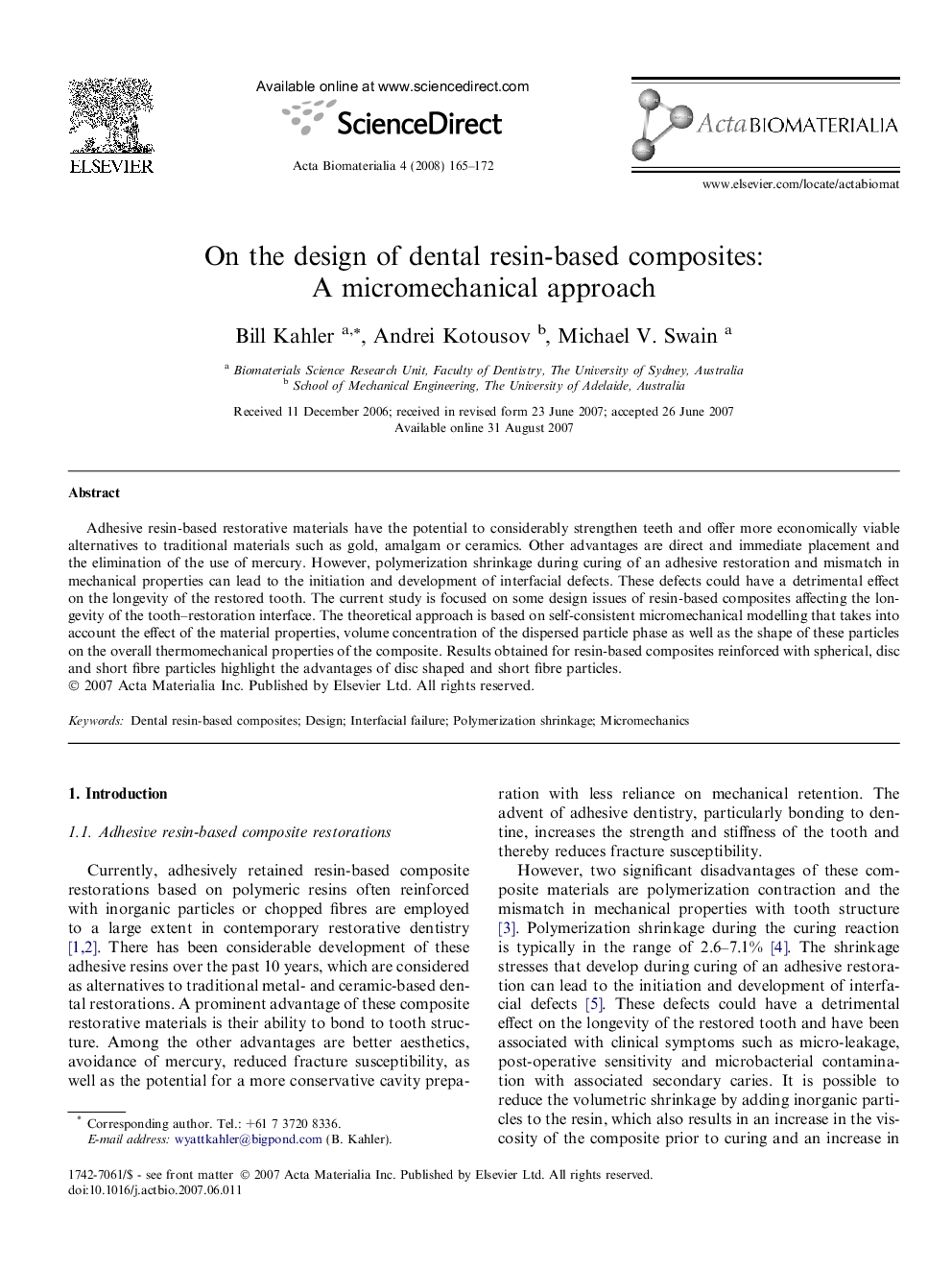| Article ID | Journal | Published Year | Pages | File Type |
|---|---|---|---|---|
| 1982 | Acta Biomaterialia | 2008 | 8 Pages |
Adhesive resin-based restorative materials have the potential to considerably strengthen teeth and offer more economically viable alternatives to traditional materials such as gold, amalgam or ceramics. Other advantages are direct and immediate placement and the elimination of the use of mercury. However, polymerization shrinkage during curing of an adhesive restoration and mismatch in mechanical properties can lead to the initiation and development of interfacial defects. These defects could have a detrimental effect on the longevity of the restored tooth. The current study is focused on some design issues of resin-based composites affecting the longevity of the tooth–restoration interface. The theoretical approach is based on self-consistent micromechanical modelling that takes into account the effect of the material properties, volume concentration of the dispersed particle phase as well as the shape of these particles on the overall thermomechanical properties of the composite. Results obtained for resin-based composites reinforced with spherical, disc and short fibre particles highlight the advantages of disc shaped and short fibre particles.
